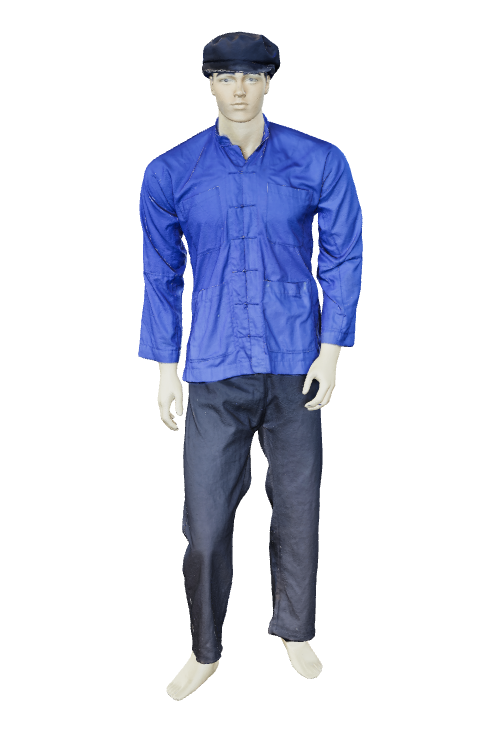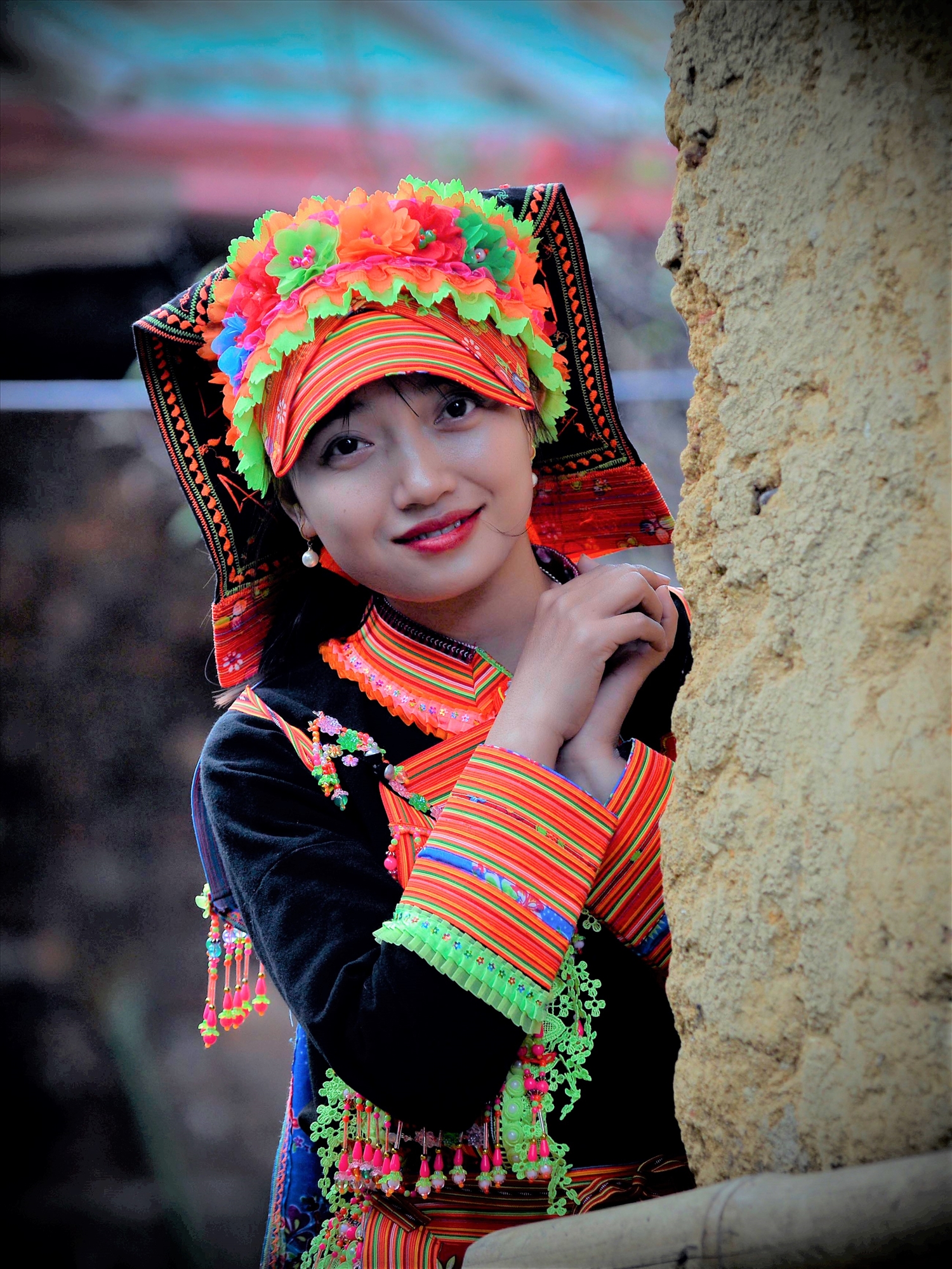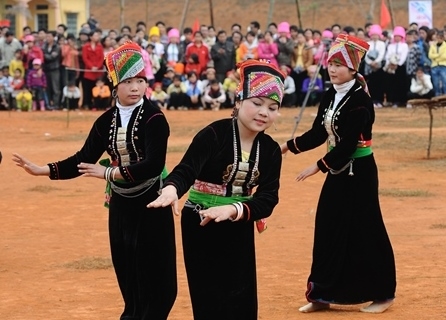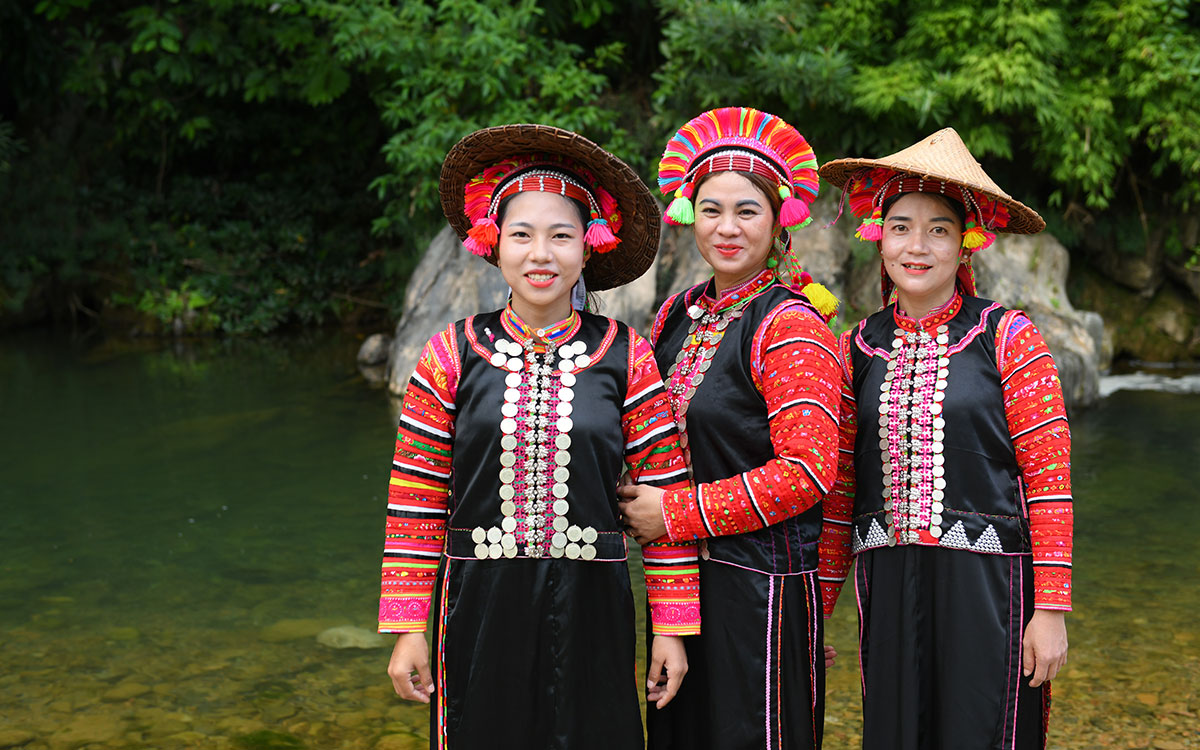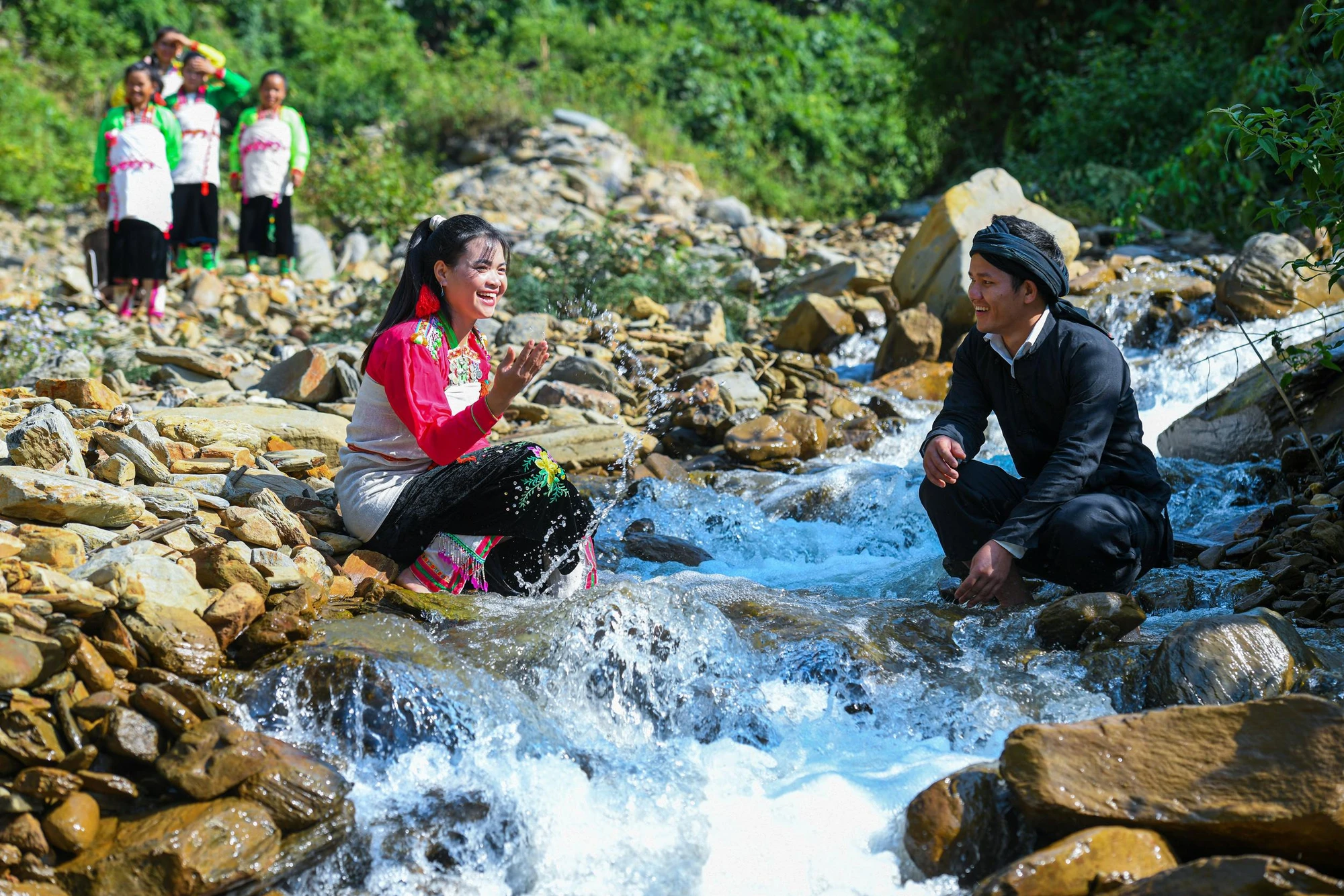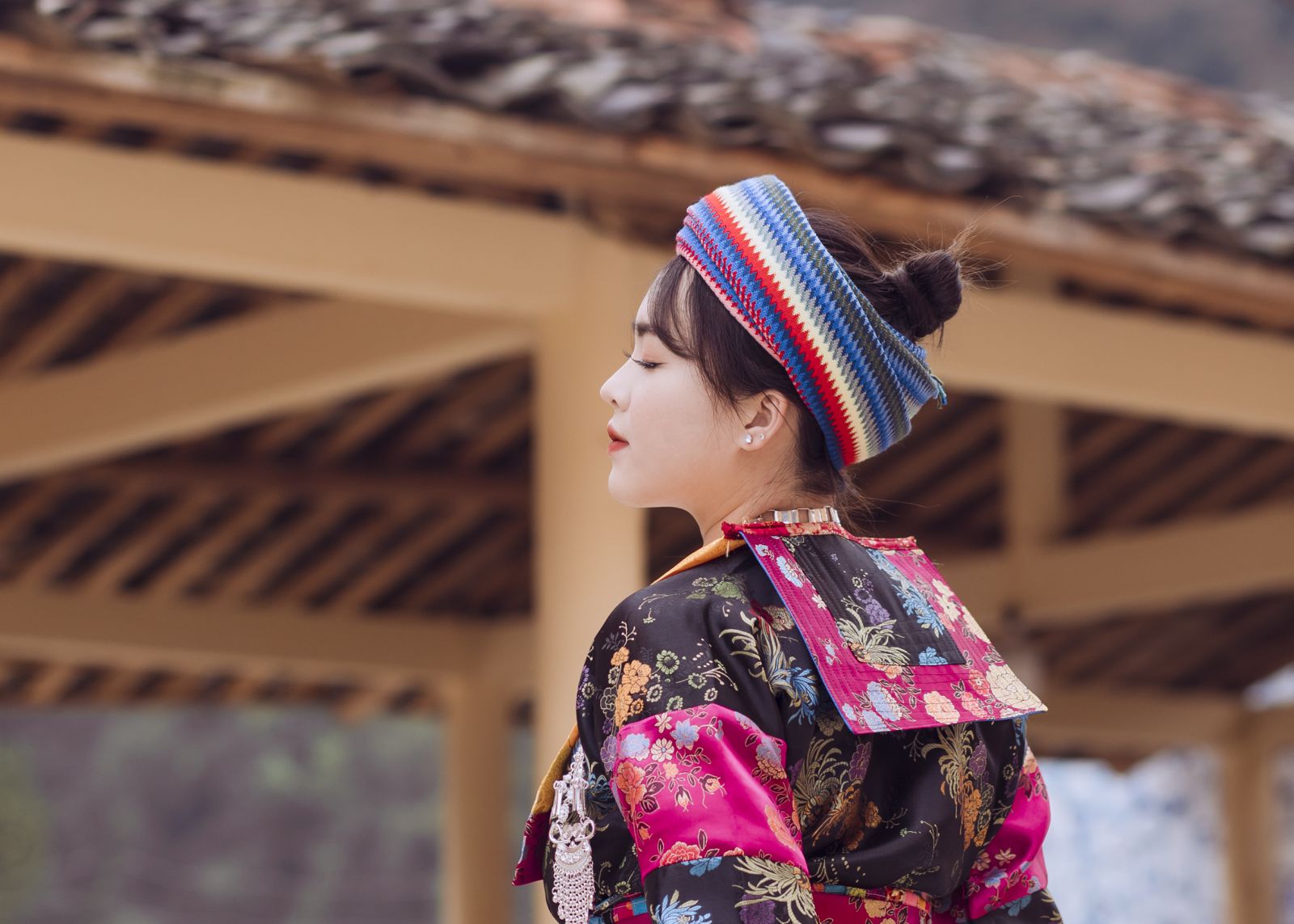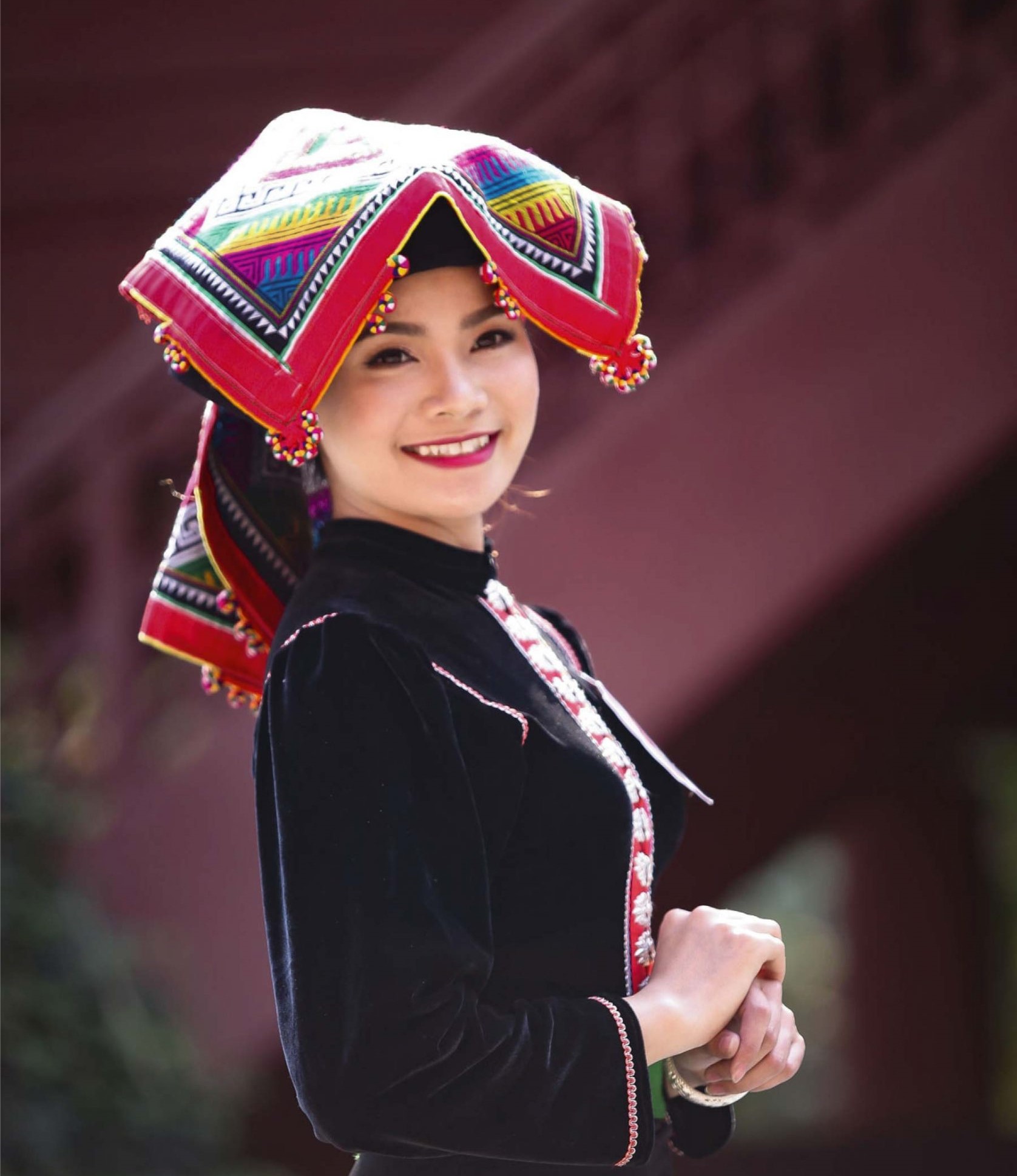GIÁY ETHNIC GROUP
INTRODUCE
- General overview
Giáy people are also called Pú Giáy hoặc Hún Giáy. The “Hán” and “Pú” words mean people. The Tày and Thái ethnic groups call the Giáy people as Giảng people. Giáy people are called Nhắng people by Kinh people, but this name is not commonly used within the Giáy community. The Giáy people are divided into the Cùi Chu and Pú Nả subgroups. They are one of the eight ethnic groups belonging to the Tày-Thái language family, but they maintain their unique cultural identity and characteristics. In Lai Châu, they comprise over 25 thousand people (data in 2016), concentrated in Tam Đường, Phong Thổ and Tân Uyên districts, and Lai Châu city.
The Giáy people do not have their own writing. They use Chinese and Confucian characters to decorate the ancestral altar area in the main house.
- Village space + Living space
In ancient times, the Giáy people lived in stilt houses. However, nowadays in Lai Châu, they predominantly live in houses with three rooms. This house can be built with a kitchen (in the same direction) attached to the main room. The Giáy people’s houses can be categorized into four levels, as follows:
1- The “lowest” level: a part of houses is built using round or square timber or bamboo. It has one space with two wings or three rooms. The roof is thatch and straw. The walls are made of bamboo. Inside the house, there is a garret used for storing rice, corn, and other items.
To ensure durability, the Giáy people mainly use lashing to tie wood together. They can also thread "phang" if it is a sturdy wooden column.
In general, this type of house is considered temporary and often built due to the family's limited economic resources. The owners of this house are mainly of two types: first, those who are extremely poor; and second, new couples who have just moved out and wait to build a new house, either because their economic capacity is not sufficient or the necessary construction materials are not yet available.
2- The "medium" level: a wooden house. It has stone foundations supported by three rows of pillars to prevent moisture and termites. It has beams, a "hanging" structure, roofed with straw or large bamboo leaves. The walls are constructed from bamboo and woven rattan. Inside, there is a loft for storing rice, crops, and belongings. This type of house is structurally sturdy due to the cross beams and interlacing method, earning it the name "chả còng vái" (set of columns in the buffalo barn). It is designed for long-term use.
3- The "higher" level: a stilt house with stone foundations supported by five rows of pillars. Additionally, it has additional stacked columns on the upper floor with three or five layers, primarily three layers. The Giáy people refer to this type of house as "Sram lạp ray" (ba lớp chõ-tầng cột chồng). The upper floor can make a railing and move from one room to the other comfortably.
The structure of this house is quite sturdy, with beams and "phang" connecting the columns and layers. The roof can be made of half-round tiles, thatch, or straw. The surrounding walls are usually made with planks or woven bamboo. At least the two sides of the main door and the central wall of the main room, where the altar is located, are made of smooth wood on both sides. These houses have a very long lifespan, and replacement is only necessary in the event of significant damage or deterioration over time. About one-third of the households in a village typically have this type of house.
4- The "highest" level: the entire structure is like the third type, but the "stacked columns" can be extended to 5 or 7 layers. The garret is covered with wood, and the surroundings of both the lower and upper floors are smoothed with wooden planks. The roof can be entirely covered with pine wooden tiles or, at the very least, two-thirds of it is thatched. There are wooden lattice screens around the windows.
The owner of this type of house is a wealthy family. Its number accounts for only 1-5% of the total number of families in a village. In areas with scarce wood and bamboo, people build houses with mud walls, wooden roofs, and thatched roofs with bamboo or straw. The size of the house, whether large or small, depends on the economic situation of each family.
- Agricultural production activities
The Giáy people have extensively reclaimed deep swampy areas within mountainous ravines, converting them into terraced fields along the low hillsides for cultivating wet rice. Simultaneously, they also pay attention to swidden fields in hilly and high mountainous areas, where they grow various food crops to ensure their lives. The primary areas for cultivation include deep valleys, terraced fields, and flat lowland areas along rivers and streams. Therefore, in addition to paying attention to technical factors in soil preparation, fertilization, and care, strict adherence to the seasonal schedule in planting and harvesting is an important concern. Because if you don't plant at the right time before the floodwaters come, you won't be able to plant anymore. As for harvesting, if done too soon, the rice is still young, but if left too late, wild animals will damage it. Hence, it is essential to choose the right time for harvesting. In the Giáy community, a "support each other" culture has been formed in both life and daily activities, especially in the exchange of labor during planting and harvesting.
There are three typical tools of the Giáy people: a double-bladed hoe for harrowing corn, sesame, peanuts and rice fields; a yoke for carrying rice; and a water-powered rice pounder called "súi miến".
The farming, hunting and fishing tools are mainly used or adapted by the Hmong people. These tools are easy to use and suitable for varied agricultural terrains, including sloping land, flat land, and areas with many rocks, roots, and grasses.
- Livestock production activities
In livestock, horses are the most valued animals among the Giáy people, used for carrying goods and transportation. Next are buffaloes and cows, which are used for plowing and provide fertilizer and a source of food. Although they are the property of each family, the livestock is allowed to roam freely in a shared forest area, carefully fenced around. Buffaloes and cows roam freely, grazing on grass within that forest area, and are only visited and tended to every few days. When there is a need for plowing or transportation, the family brings them home for additional care a few days before use. Common livestock such as chickens, ducks, and geese are also kept in coops and grazed on the fields, with someone looking after them and the fields. Recently, people have started keeping livestock closer to their homes but not bringing them indoors.

